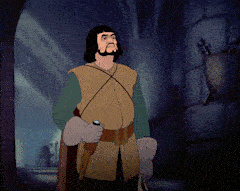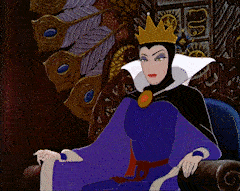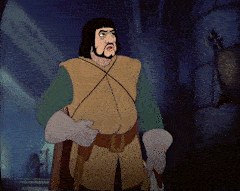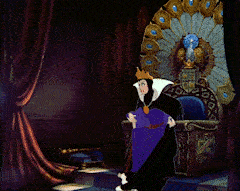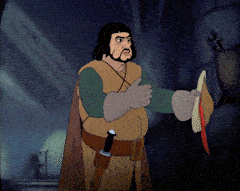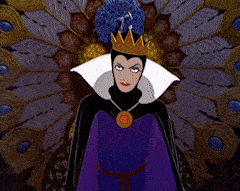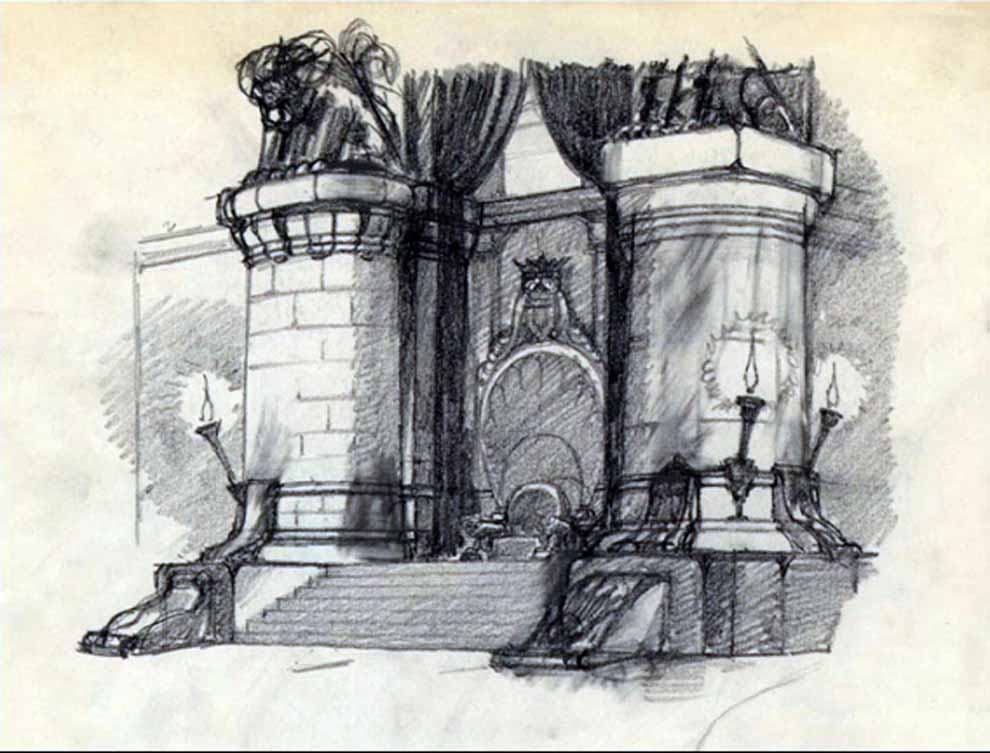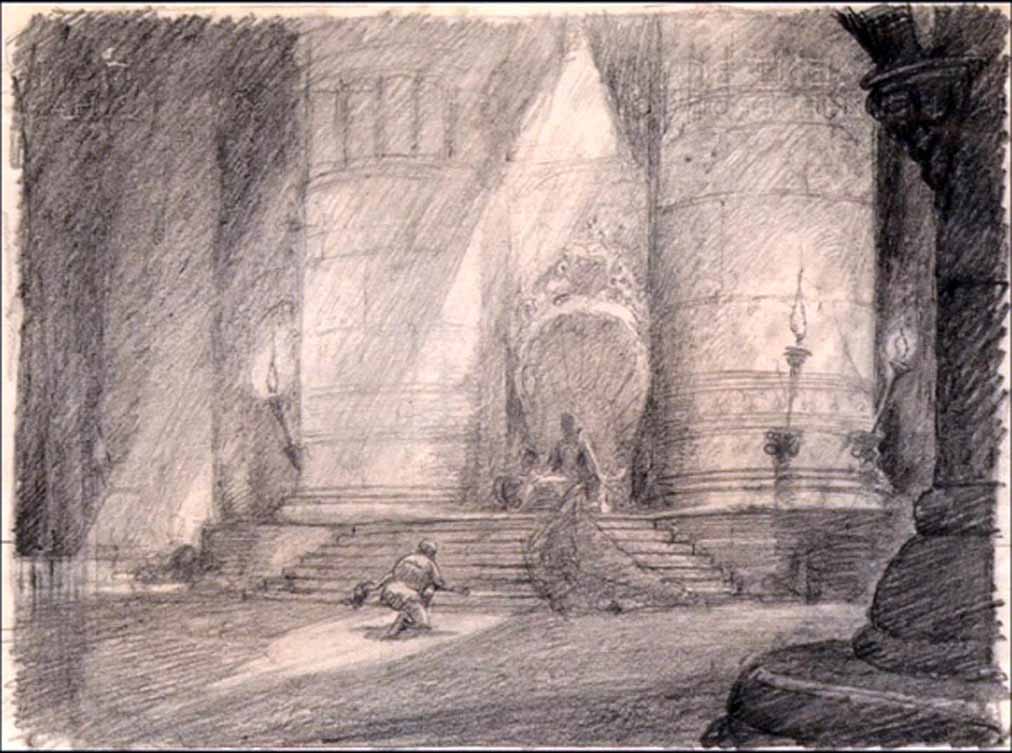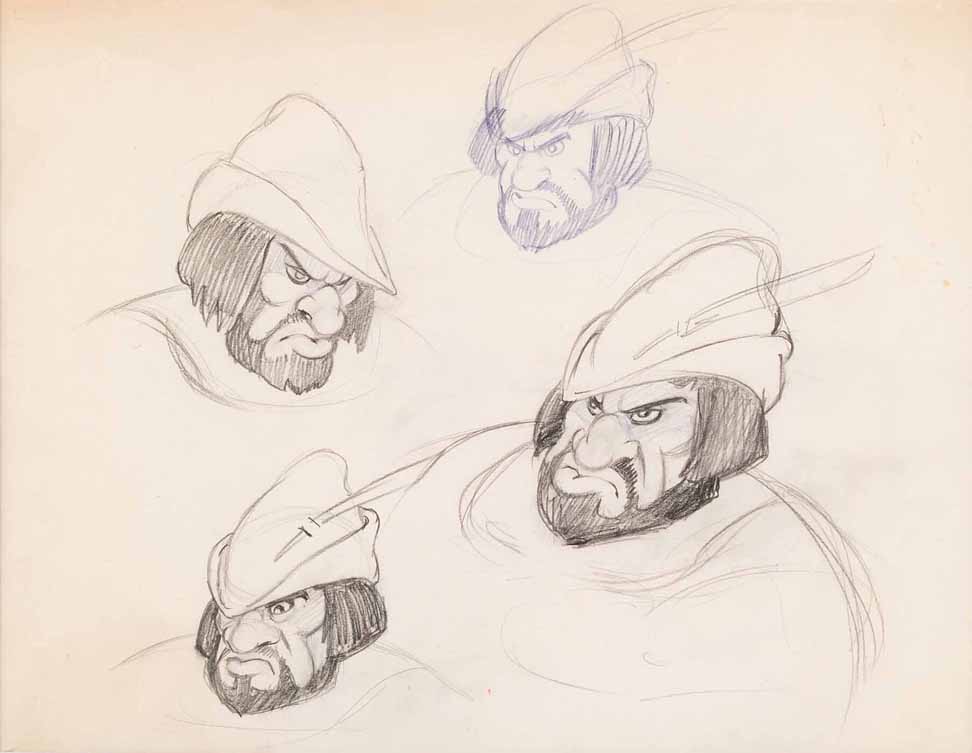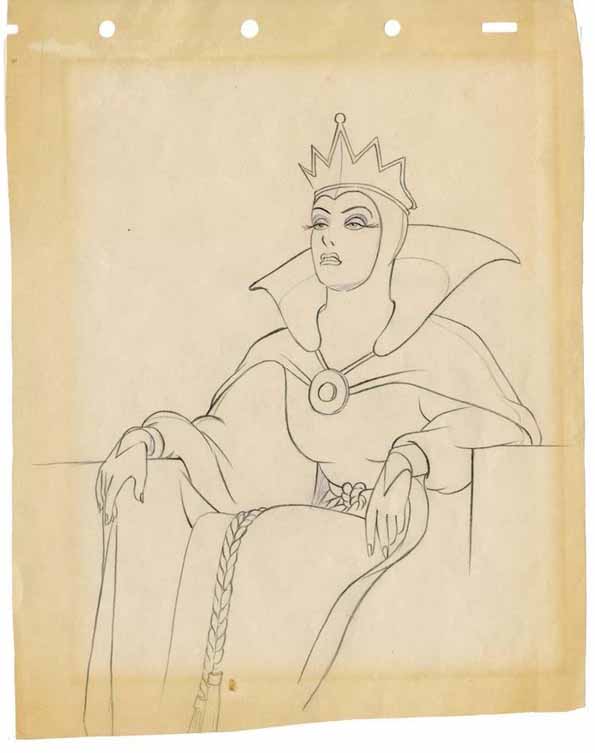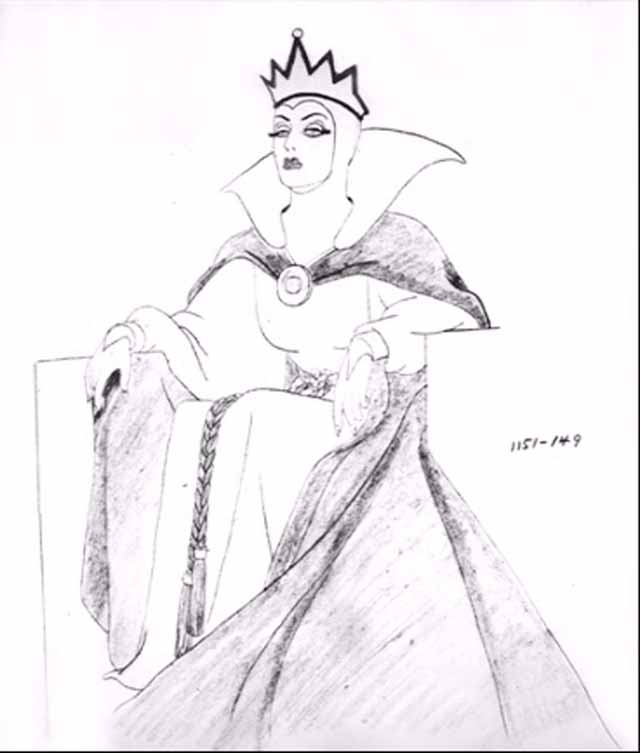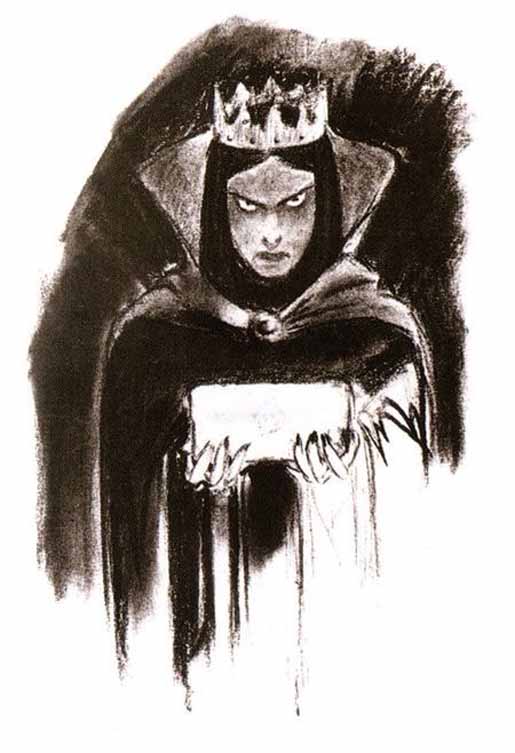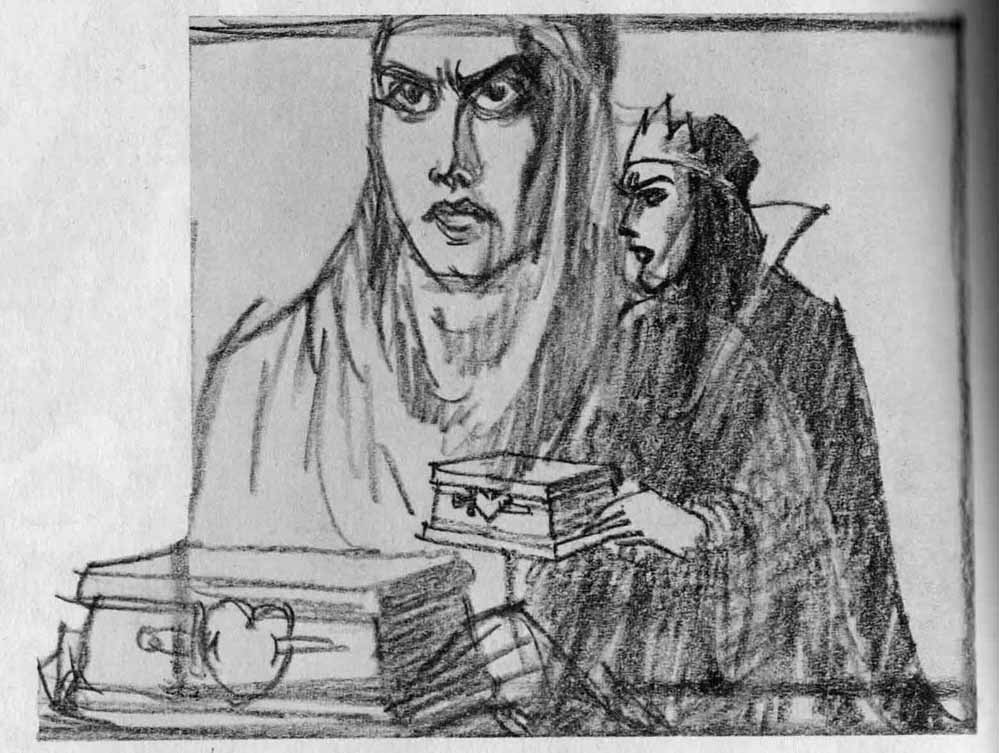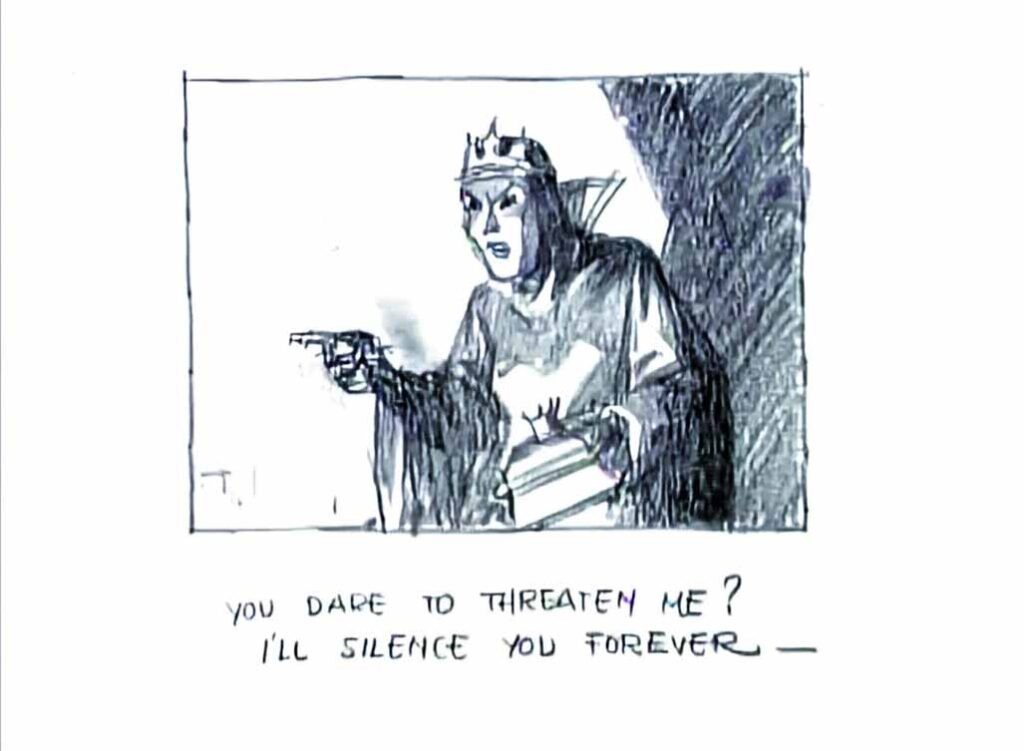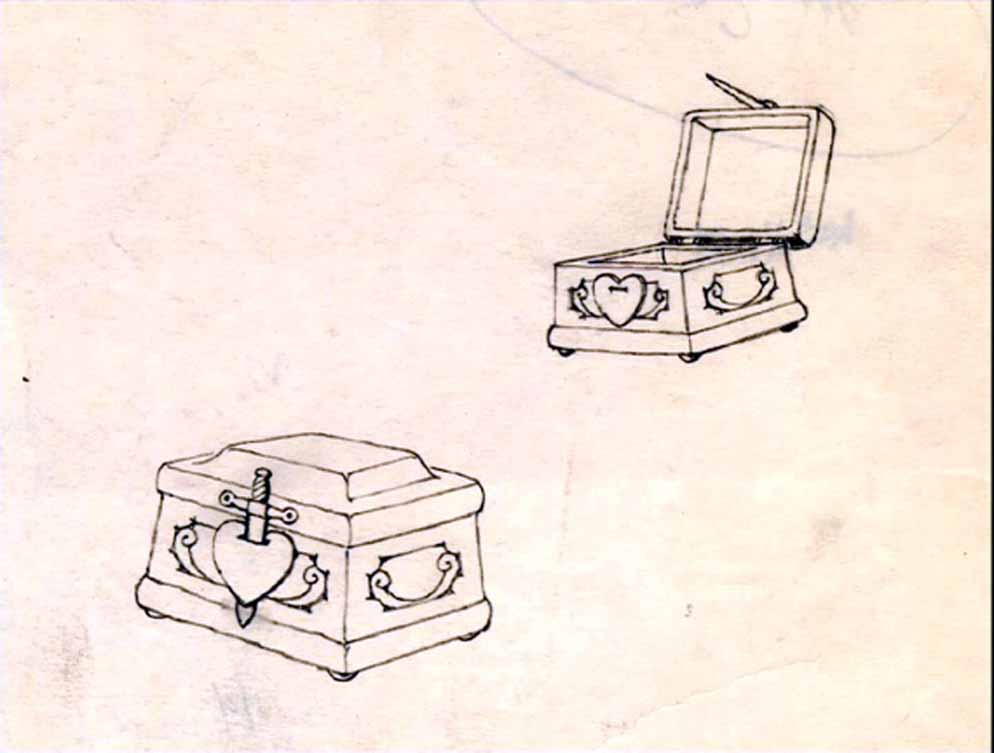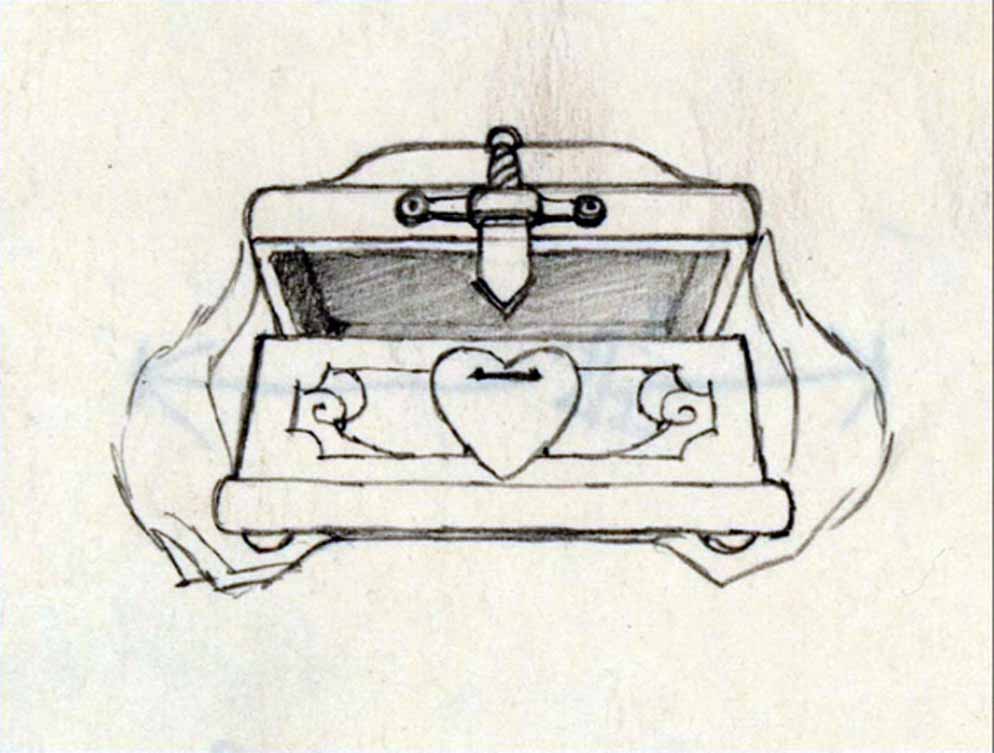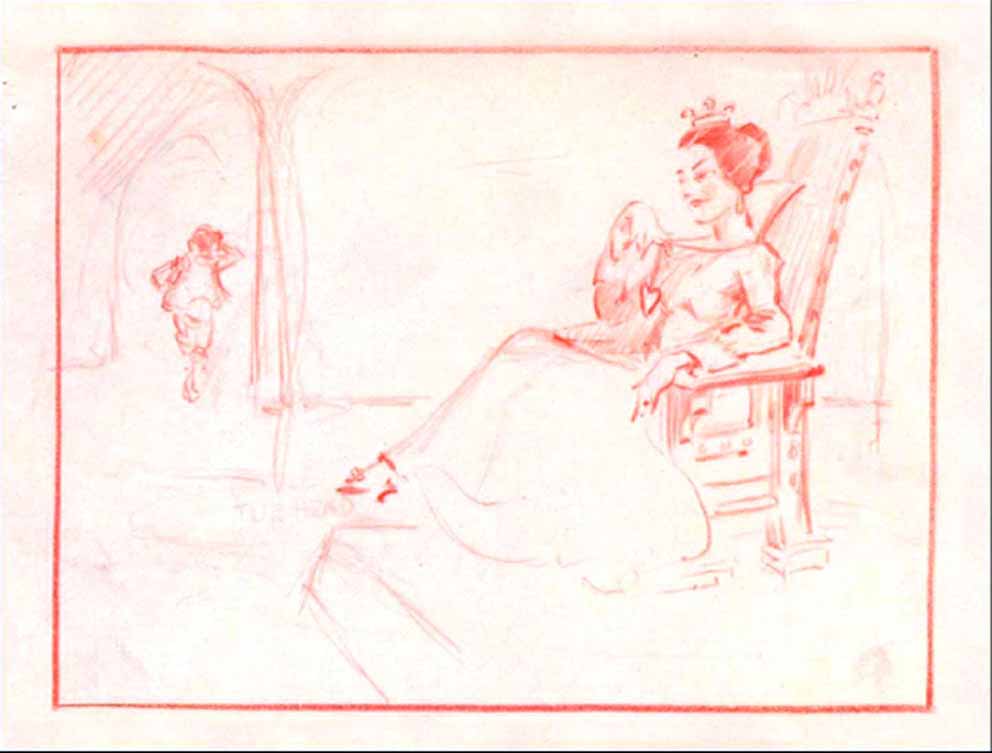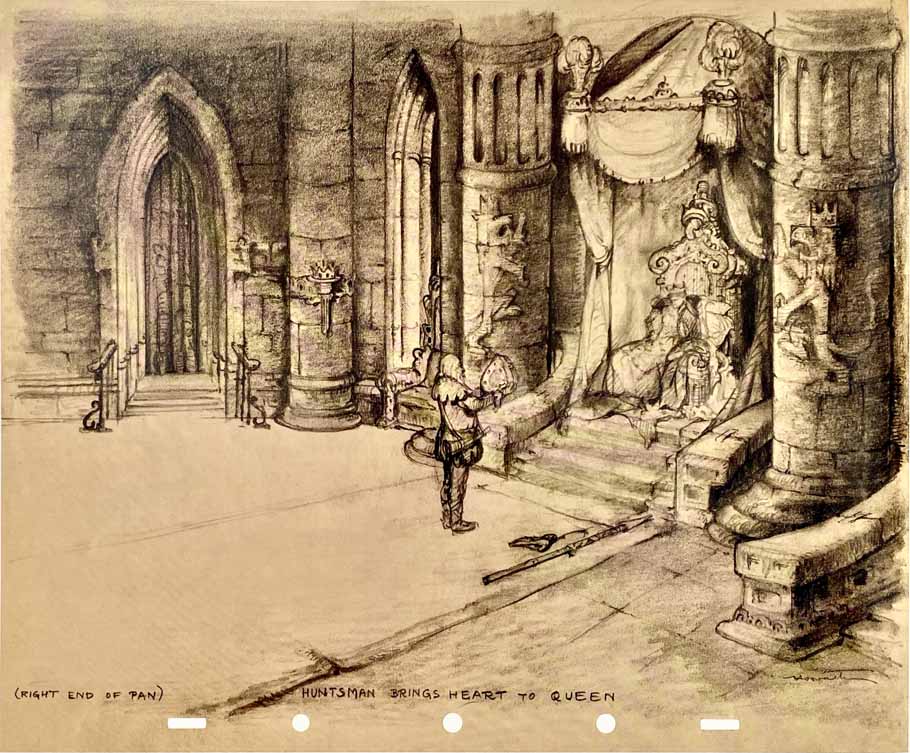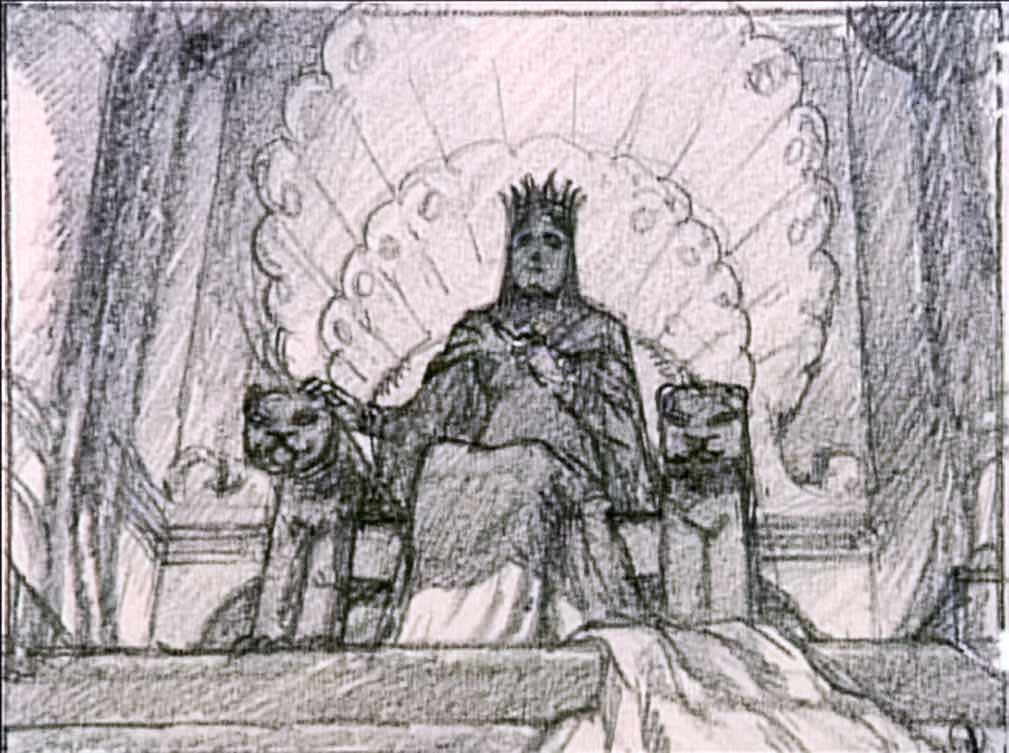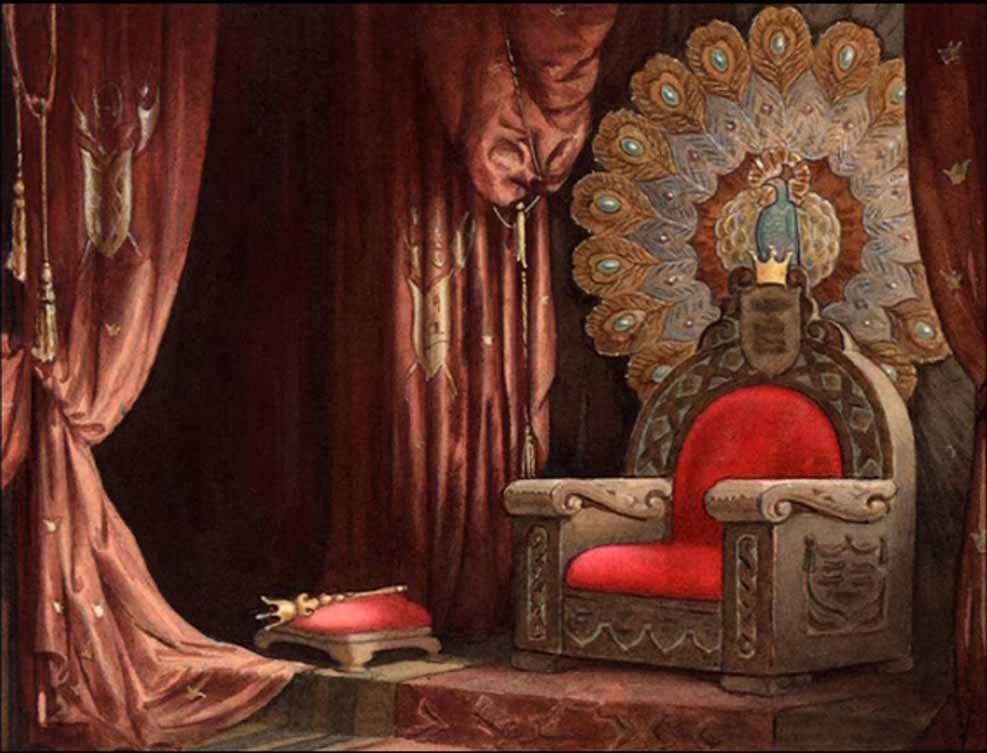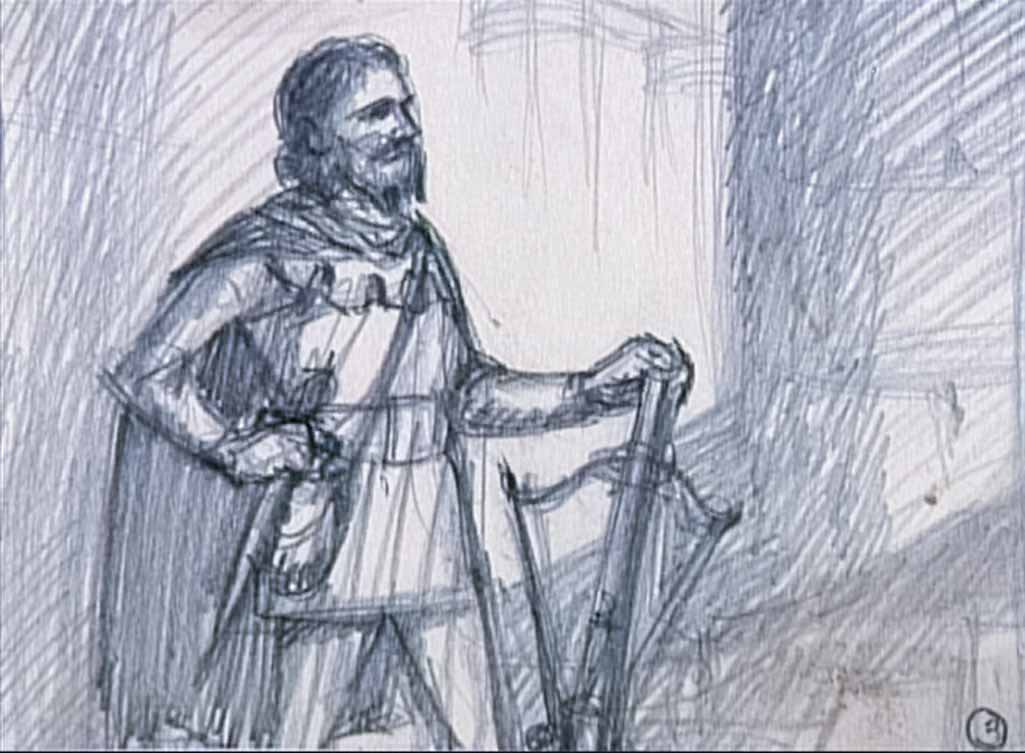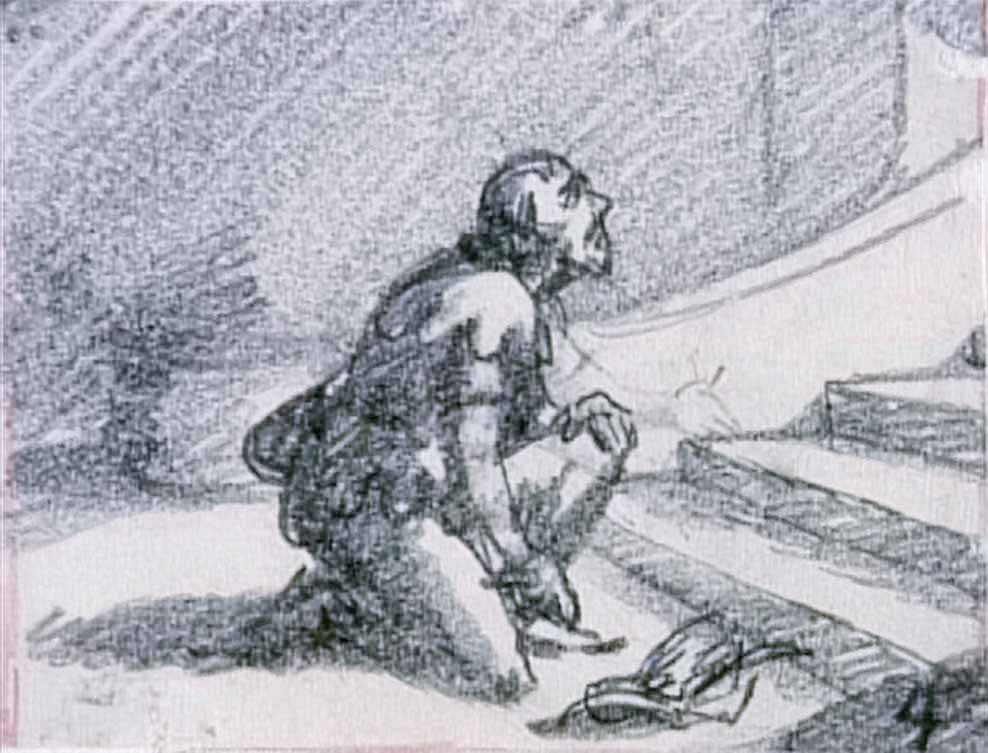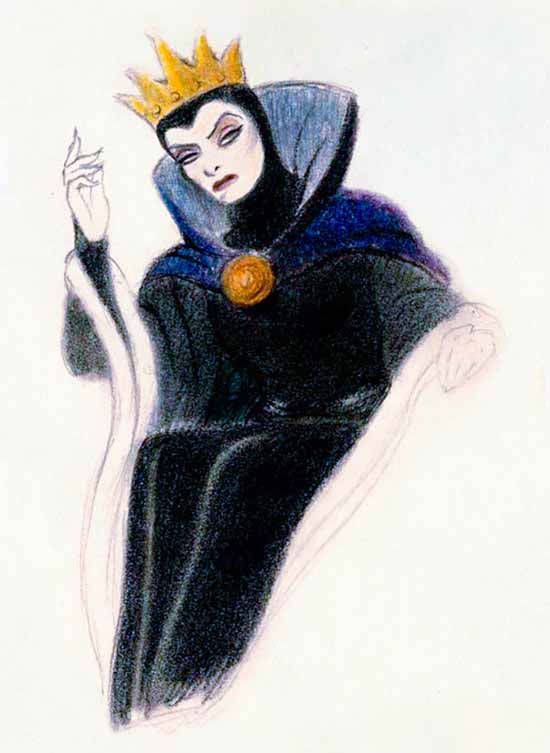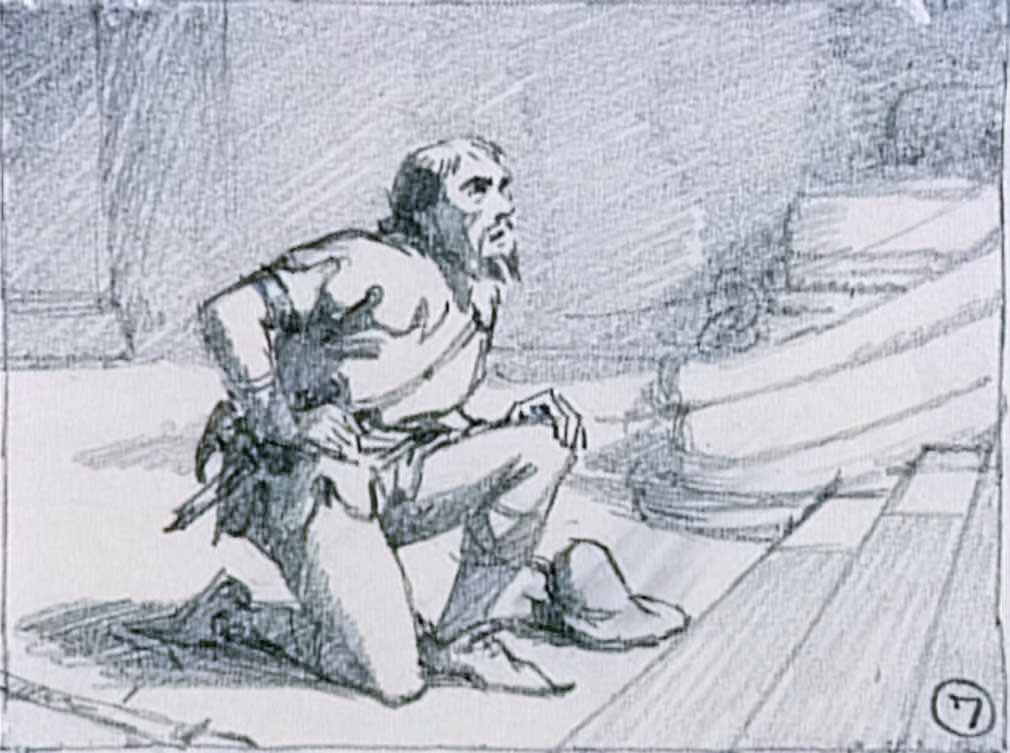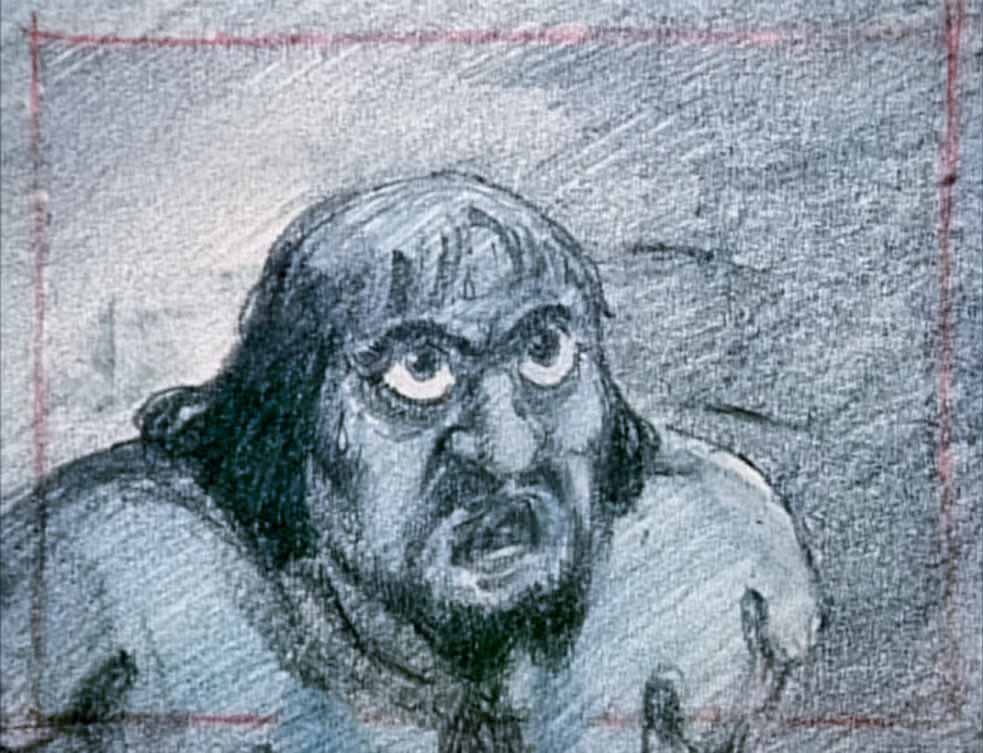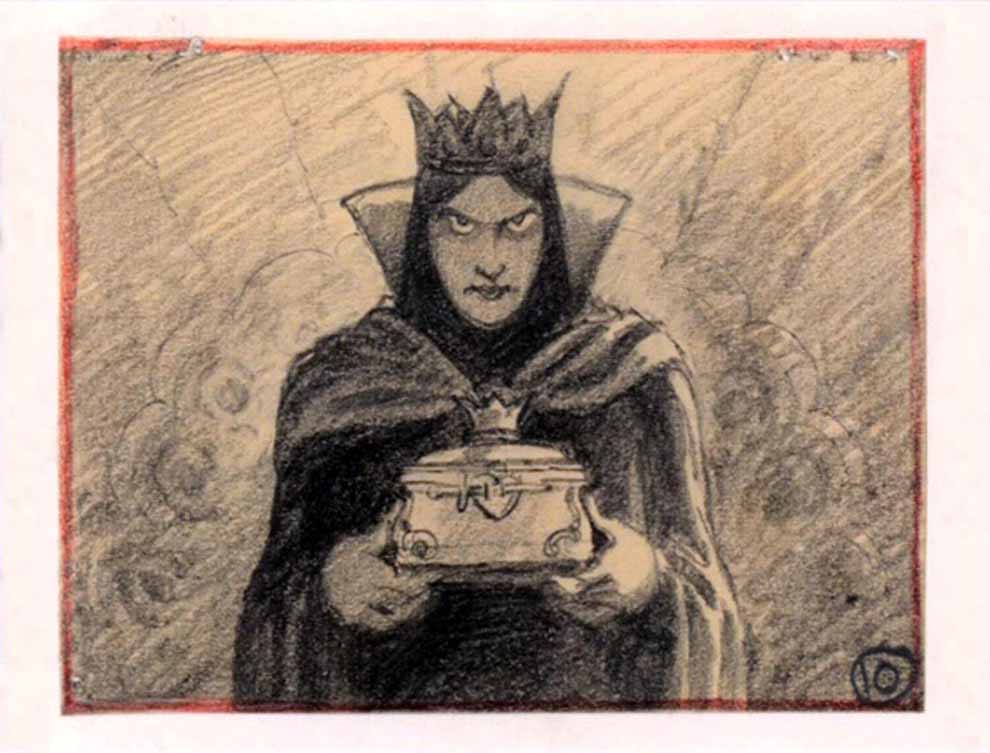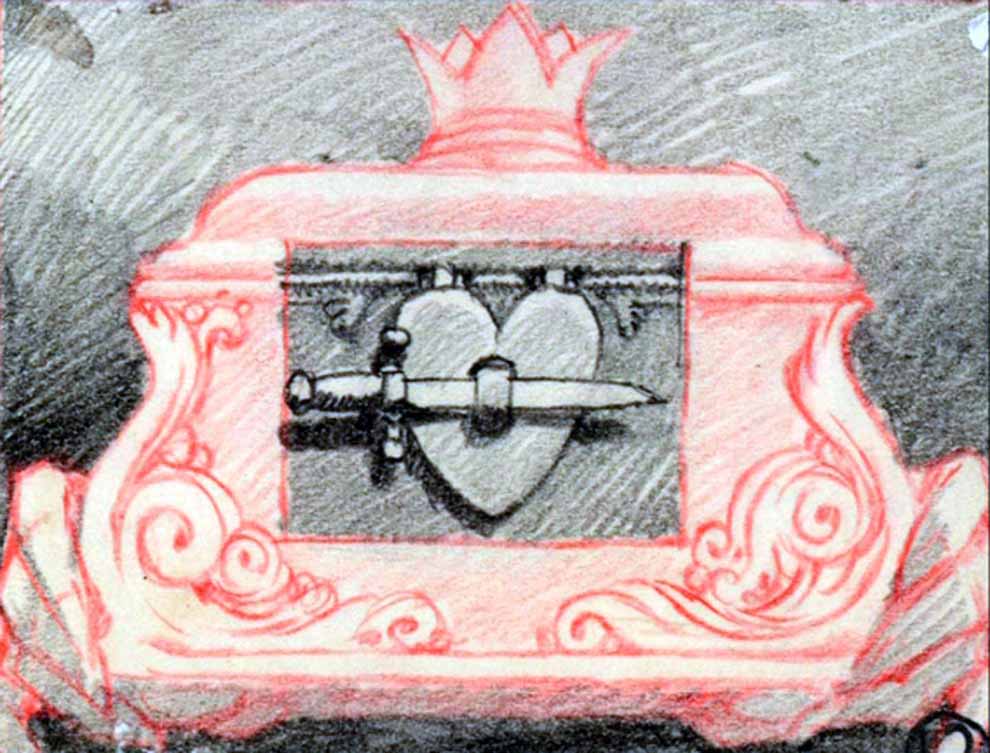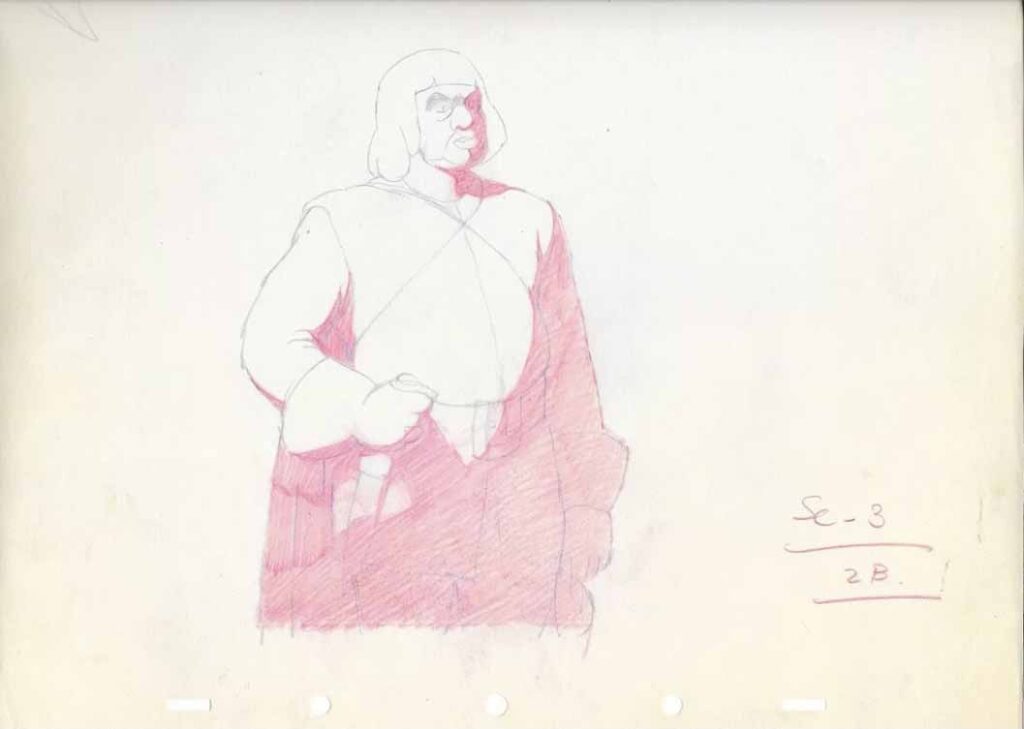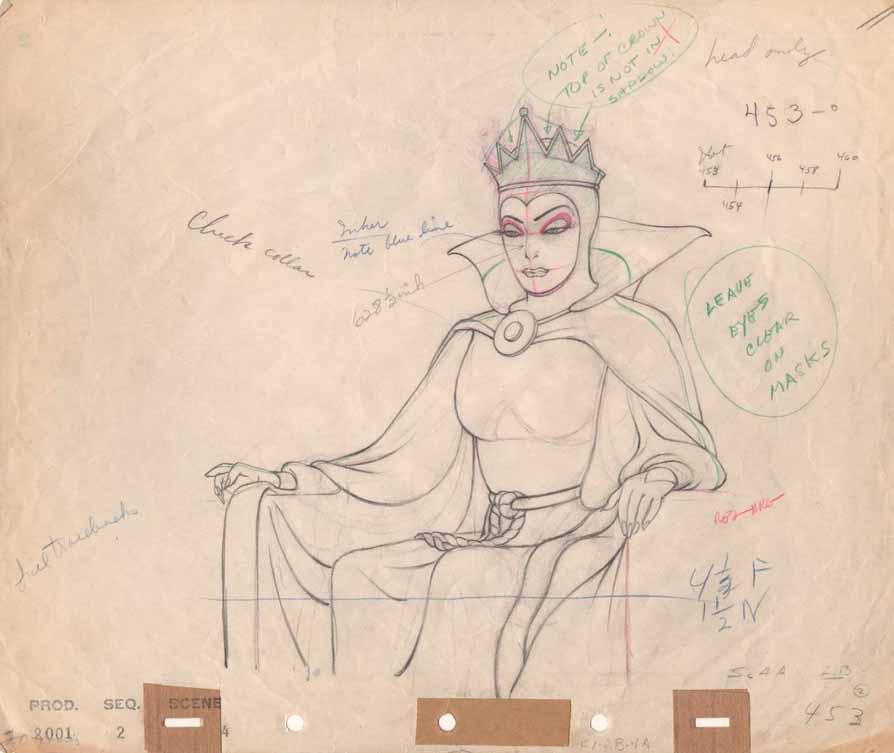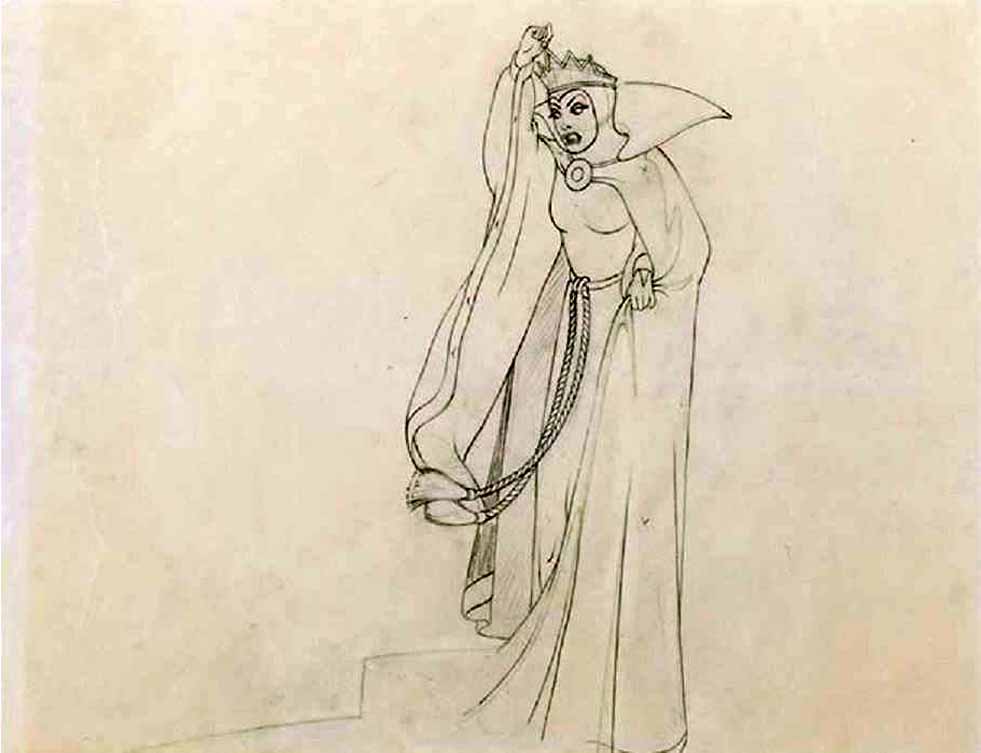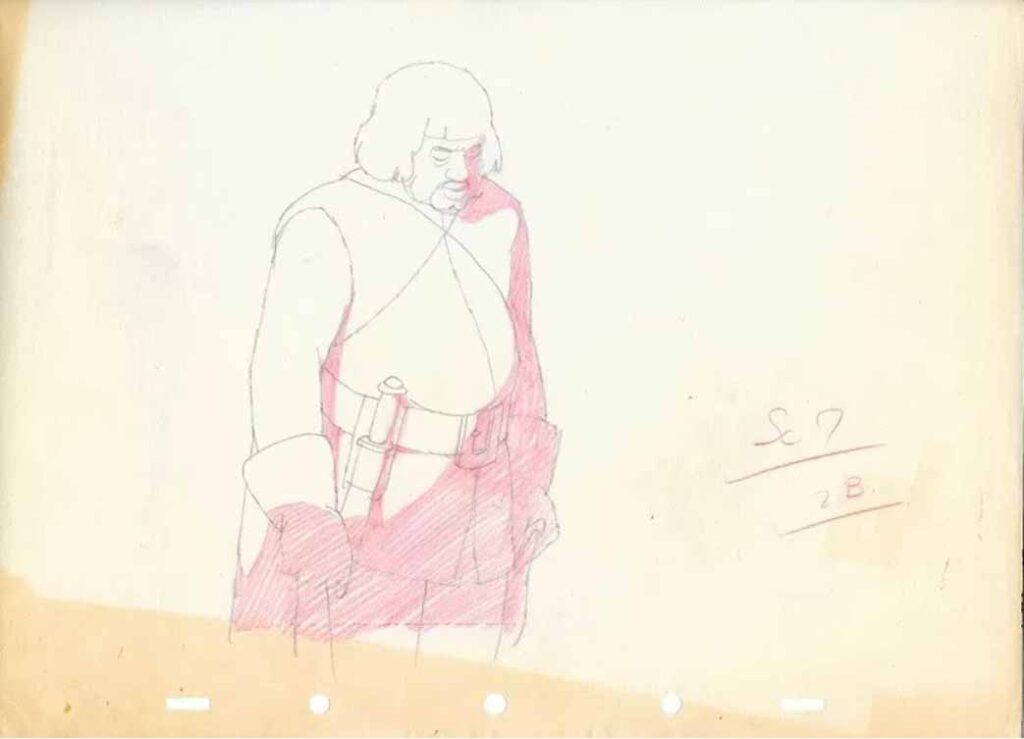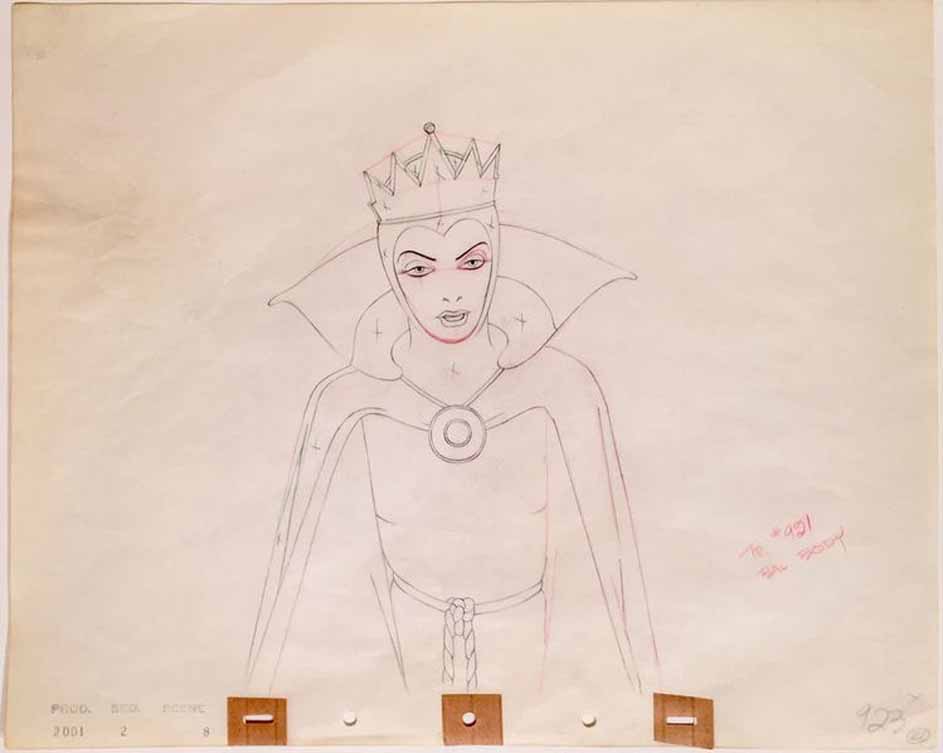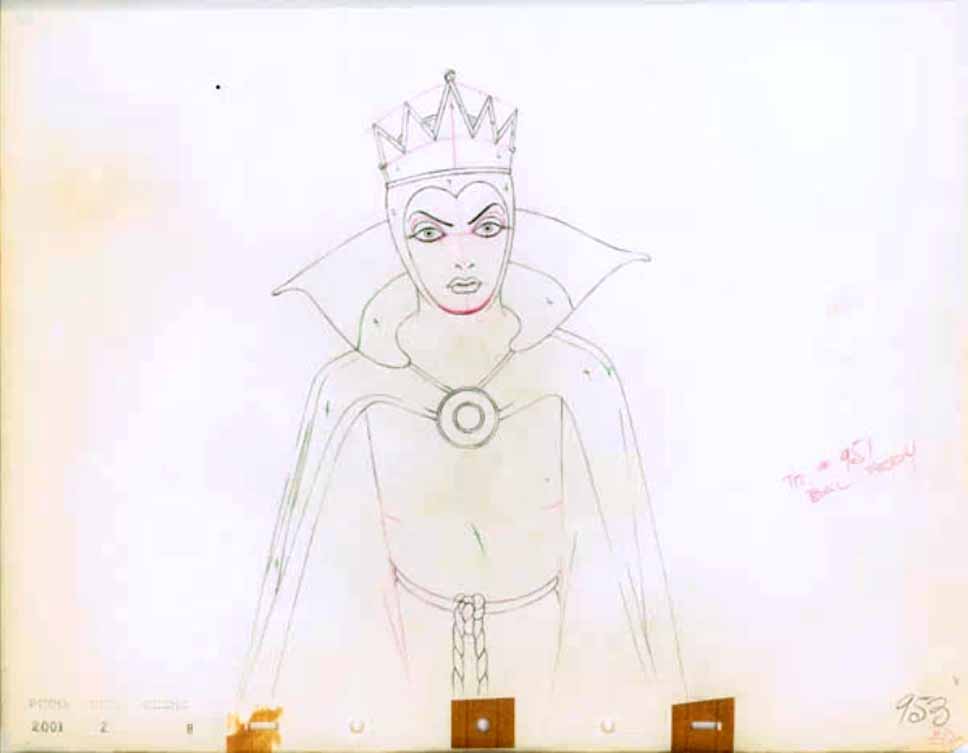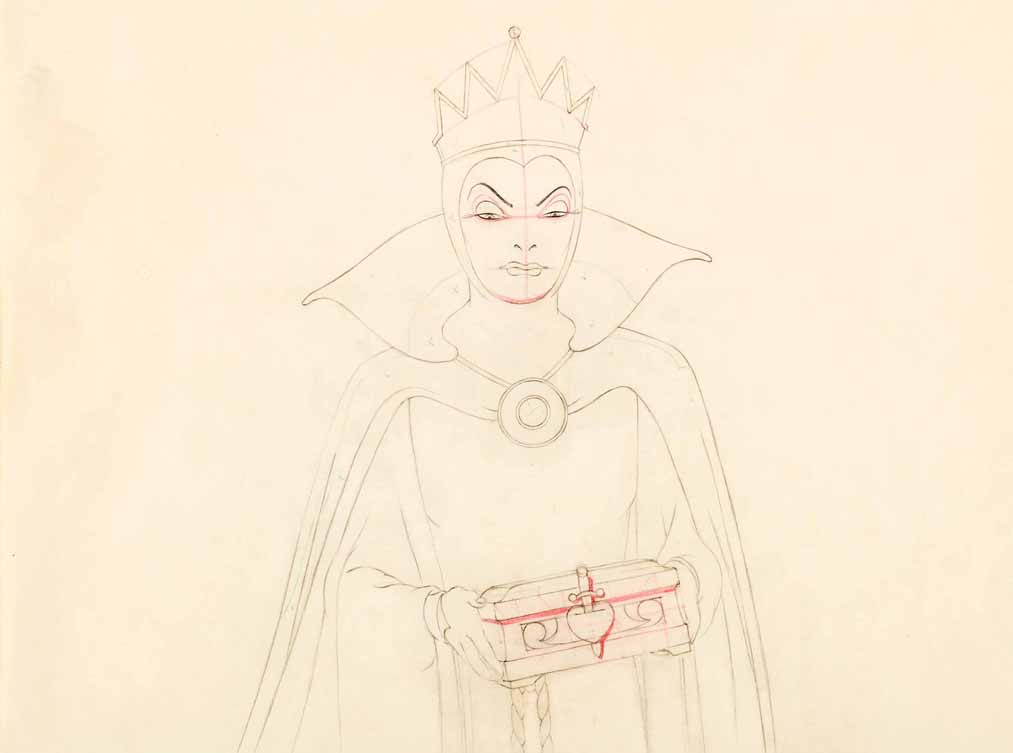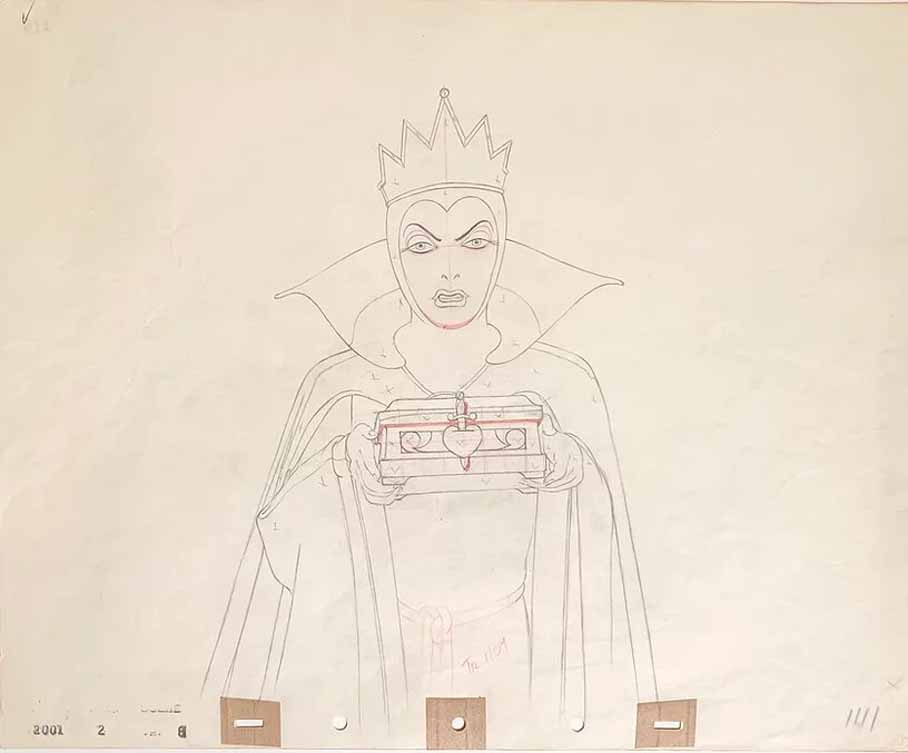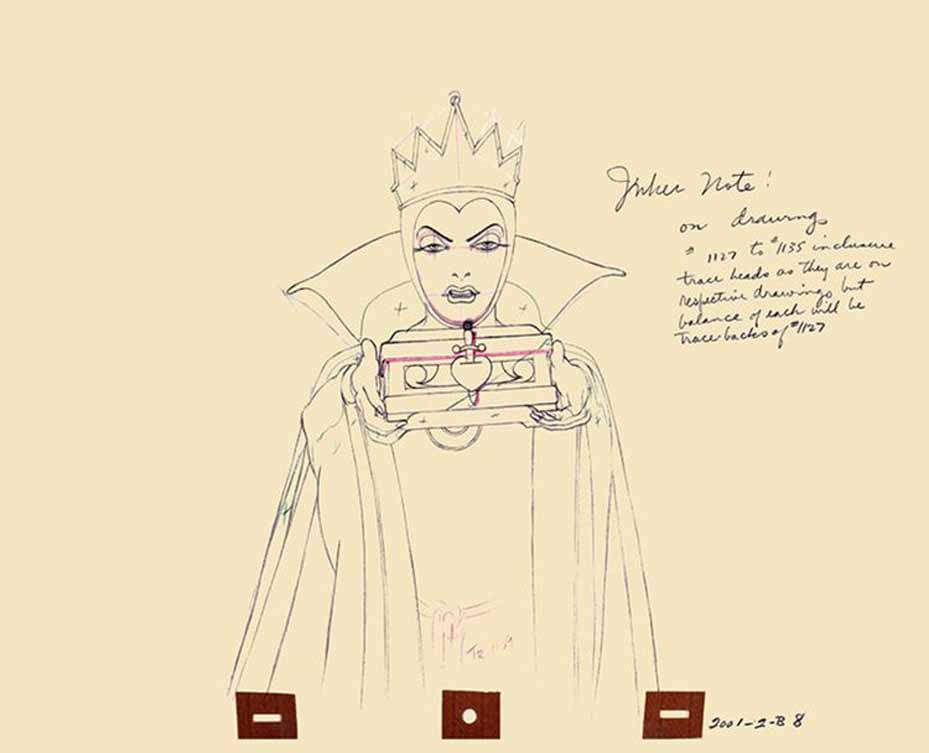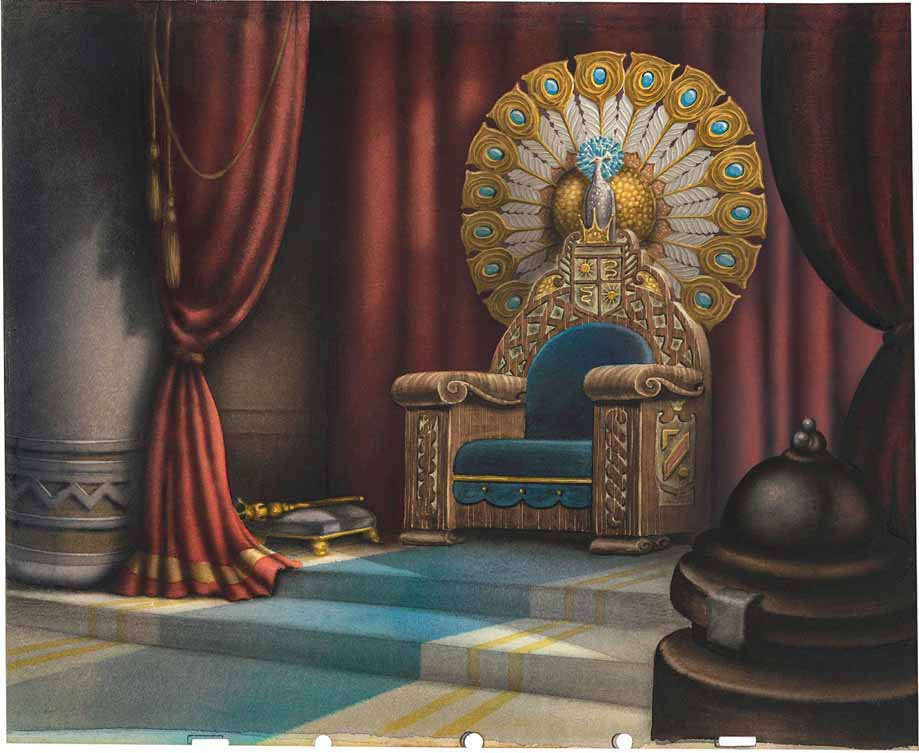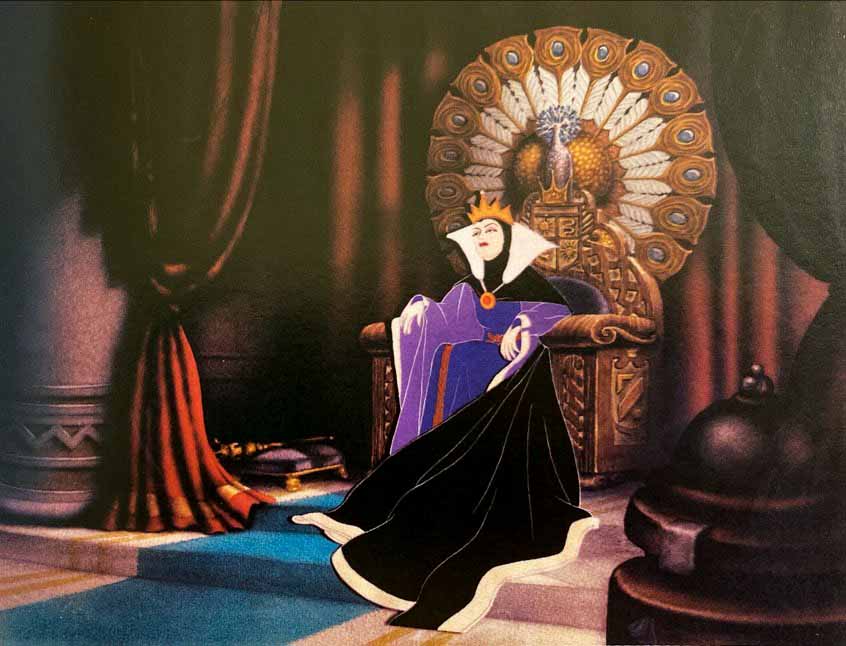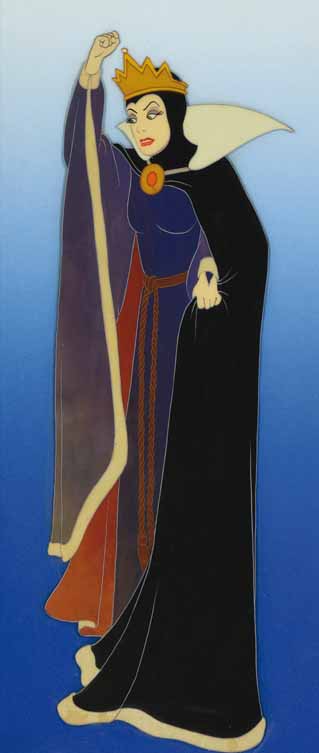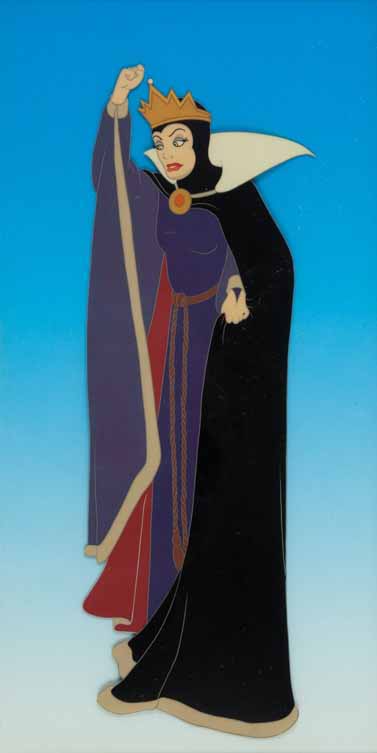In this short sequence, the threat to the heroine (absent here) becomes clearer: we meet the henchman whom the Queen has commissioned to kill the young girl. His protests reveal that he doesn’t agree with the plan, but the sovereign silences him. Where some adaptations describe the threats to the huntsman (and his family, in particular), in the film, the Queen’s inflection is enough to make us imagine the worst reprisals. The ultimate refinement in horror, the box in which Snow White’s heart is to be returned was obviously made for that purpose.
As can be seen from the concept drawings, the look of the throne, the room and its atmosphere did not flow from the outset. From a simple armchair to a luxurious piece of furniture perched on a flight of steps in the middle of a vast, light-filled Gothic hall, the throne will ultimately be richly adorned with peacock feathers, but the tight framing of the scene creates an intimate atmosphere that doesn’t allow us to gauge the grandeur of the room, but plunges the viewer right into the heart of the Queen’s cruelty and the unfolding drama. Similarly, the two characters are heavily rotoscoped, designed and animated without a trace of humor. Arthur Babbitt insisted on the fact that his final animation of the Queen, however, was only influenced by the live model.
In some drawings, note the presence of panther-shaped armrests on the throne, reminiscent of the Queen’s pet, which does not appear in the final version.
In the October 9, 1934 story conference, it was suggested that, after sequence 6B where the dwarfs ate soup, there was to be a “cut to Huntsman’s return to the Queen….then back to Snow White and the dwarfs in the midst of the entertainment.” A concept drawing below illustrates this unused idea.
Production information
Sequence number: 2B
Date of final draft: November 10, 1937
Director: William Cottrell
Assistant director: Hal Adelquist
Animator of the Queen: Arthur Babbitt
Animator of the Huntsman: Errol Gray
Effects animator (Shadows, highlights, box): Cy Young
Cast
The Queen: Lucille La Verne
The Huntsman: Stuart Buchanan
Production documents about the sequence:
Story Conference of 09/26/1936: Sequences 1B, 2A, 2B, 7A
Scenes
Here is the sequence broken up into scenes with the corresponding animators.


